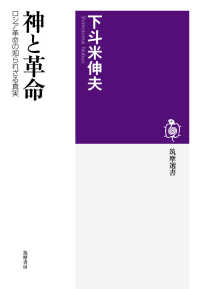- ホーム
- > 洋書
- > 英文書
- > Science / Mathematics
Full Description
This book aims to present an introduction to numerical modeling of different aspects of large-scale superconducting applications: electromagnetics, thermal, mechanics and thermo-hydraulics. The importance of computational modeling to advance current superconductor research cannot be overlooked, especially given the enormous benefits provided by superconductors in many human endeavours, including energy generation, medical treatments, and future electrical technologies.Aimed at graduate students, researchers and practitioners in different fields of applied superconductivity, this book consists of four chapters. The chapter on electromagnetics provides a review of the state-of-the-art modeling of electromagnetic phenomena in superconductors, emphasising the theoretical aspects of the different numerical formulations. This is followed by a chapter on thermal effects, dedicated to the simulation of thermal stability and quench in superconducting magnets, with specific examples of magnets used in particle accelerators. Then, the chapter on mechanics provides details of the modeling of forces and stresses in cables composed of second-generation high-temperature superconducting wires. Finally, the chapter on thermo-hydraulics focuses on the fundamental thermal-hydraulic aspects involved in the cooling of superconducting magnets, with special reference to the issues related to the forced-flow cooling.








